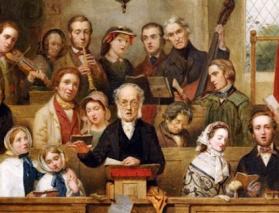In a brief article in the August 6 TLS , Stephen Brown reflects on the influence of African music on the music of America and Europe. Until WWI, he writes, African music had little impact on the wider musical scene, but after the war “there was no popular music in the United State ?Ewith the possible exception of Jeannette MacDonald and Nelson Eddy ?Ethat did not bear witness to the transformation wrought by black musical culture.” He compares the African impact on American music to the influence of Florentine and Baroque painting styles in teh Renaissance and the 17th century respectively. It is not merely that jazz and blues became more popular but “there was a new vocabulary, a new syntax, a new grammar.” In particular, it was a new rhythm: “Rhythm in African music is a composite of simultaneously occurring layers; polyphonic textures of rhythmic patterns . . . . African polyphony requires that different rhythmic layers should maintain their independence, should be heard as distinct, and yet in combination should create a rhythmic whole greater than its parts.” Gershwin’s “Summertime” provides an example; in the Louis Armstrong/Ella Fitzgerald version, “the rhythm of the accompaniment (actually consisting of at least three rhythmic strands) plays with an independent consistency, while the trumpet and then the vocal lines play freely above it.”











